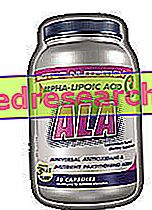
What is MIRCERA?
MIRCERA is a solution for injection, containing the active substance methoxy polyethylene glycol-epoetin beta, available in vials and pre-filled syringes in different dosages, ranging from 50 to 1, 000 micrograms per milliliter.
What is MIRCERA used for?
MIRCERA is indicated in the treatment of anemia (decrease in the number of red blood cells) in patients suffering from chronic renal failure (progressive, long-term decrease in kidney function).
The medicine can only be obtained with a prescription.
How is MIRCERA used?
Treatment with MIRCERA should be started under the supervision of a doctor experienced in treating patients with kidney failure. The starting dose and the frequency of the dose depend on the use or not of MIRCERA as a substitute for another drug used to stimulate the production of red blood cells. Patients who are not given one of these drugs should start with a dose of 0.6 micrograms per kilogram of body weight twice a month. Patients who are given one of these drugs should take MIRCERA once a month, with a dose ranging between 120 and 360 micrograms. For further details, please refer to the summary of product characteristics, included in the EPAR. In any case, the doses must be adjusted according to the levels of hemoglobin (a protein contained in the red blood cells that carries oxygen in the body), which must be monitored every two weeks until they are stable and subsequently at intervals regular. MIRCERA is a long-term therapy.
MIRCERA is given as a subcutaneous (under the skin) or intravenous (into a vein) injection. Patients can self-inject the drug subcutaneously or intravenously with a hemodialysis (a small tube leading into a vein) after receiving appropriate instructions. MIRCERA should be used with caution in patients with severe liver problems. Treatment with MIRCERA is not recommended for children because information on the safety and efficacy of the product in this group of patients is lacking.
How does MIRCERA work?
A hormone called erythropoietin stimulates the production of red blood cells in the bone marrow.
Erythropoietin is produced by the kidneys; patients with chronic kidney disease have erythropoietin deficiency, which causes anemia. The active ingredient in MIRCERA, methoxy polyethylene glycol-epoetin beta, can stimulate the production of red blood cells similarly to erythropoietin, because it is able to bind to the same receptors as erythropoietin. The way in which it interacts with the receptor is slightly different from natural erythropoietin, so its effect is more prolonged. The active ingredient is also expelled from the body less rapidly, so it can be given less frequently than other erythropoietin-derived drugs.
The active substance in MIRCERA consists of epoetin beta linked to a chemical called methoxy polyethylene glycol. Epoetin beta is a substance produced with "recombinant DNA technology": that is, it is obtained from a cell in which a gene has been inserted that makes it capable of producing epoetin beta.
How has MIRCERA been studied?
The effects of MIRCERA were first tested in experimental models before being studied in humans.
MIRCERA has been studied in six main studies, involving a total of 2, 399 adult patients with anemia associated with chronic kidney disease, and has been compared with other drugs used to stimulate red blood cell production. Two of these studies were performed on patients who were starting treatment for anemia. The first study, which involved 181 patients on dialysis (a blood purification technique used in the advanced stage of chronic kidney disease), examined the efficacy of MIRCERA administered intravenously every two weeks for 24 weeks, comparing the medicine with epoetin alfa or beta. The second study, performed in 324 patients not on dialysis, examined MIRCERA administered subcutaneously every two weeks for 28 weeks, comparing it with darbepoetin alfa.
The other four studies (involving 1 894 patients) involved dialysis patients who were already on medication to stimulate red blood cell production. In these studies, patients continued drug therapy or switched to MIRCERA administered intravenously every two or four weeks; the aim was to compare the effectiveness of the two therapeutic options. The studies lasted for 36 weeks.
In all six studies, the main measure of effectiveness was the change in hemoglobin levels in the blood. Most patients also took iron to avoid accumulating iron deficiency during the studies.
What benefit has MIRCERA shown during the studies?
MIRCERA was as effective as the comparator medicines in correcting and stabilizing hemoglobin levels. In the studies conducted on the subjects that started for the first time the treatment of anemia was recorded, among the patients treated with MIRCERA, a clinically meaningful increase of the hemoglobin levels between the beginning and the conclusion of the studies in 126 subjects (the 93 %) out of 135 in the first study and in 158 subjects (98%) out of 162 in the second study. Similar response rates were observed in patients taking the comparator medicines. In the second study it was observed that patients taking MIRCERA and those receiving darbepoetin alfa showed similar increases in hemoglobin levels (approximately 2 g / dl).
In studies conducted on patients already in drug treatment to stimulate red blood cell production, subjects who switched to MIRCERA retained equally effective hemoglobin levels of patients who continued ongoing therapy. During these studies, there was no general change in hemoglobin levels with either treatment.
What is the risk associated with MIRCERA?
The most common side effect of MIRCERA (seen between 1 and 10 patients in 100) was hypertension (increase in blood pressure). For the full list of all side effects reported with MIRCERA, see the Package Leaflet.
MIRCERA should not be used in people who may be hypersensitive (allergic) to methoxy polyethylene glycol-epoetin beta or other substances in the medicine. It must also not be given to patients with uncontrolled hypertension.
Why has MIRCERA been approved?
The Committee for Medicinal Products for Human Use (CHMP) concluded that MIRCERA has corrected and stabilized hemoglobin levels in patients with chronic renal failure and that its effects are comparable to those of other epoetins. The CHMP decided that the benefits of MIRCERA outweigh the risks in the treatment of anemia associated with chronic renal failure and therefore recommended that it be given marketing authorization.
What measures are being taken to ensure the safe use of MIRCERA?
The company that produces MIRCERA will provide an information pack for doctors containing explanations on the safety of the medicine, the possible reasons for the possible ineffectiveness of MIRCERA in certain patients and instructions on how to report side effects. The company will also provide doctors, upon request, with free tests to detect the level of anti-erythropoietin antibodies (these antibodies can be produced during treatment and reduce their effectiveness).
More information on MIRCERA
On 20 July 2007, the European Commission granted a marketing authorization valid for MIRCERA to Roche Registration Limited, valid throughout the European Union.
The full EPAR for MIRCERA can be found here.
Last update of this summary: 06-2007.



